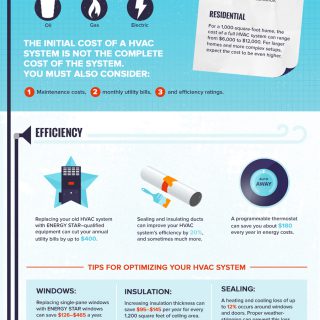The Ultimate Guide To Understanding Warm Pumps - How Do They Function?
The Ultimate Guide To Understanding Warm Pumps - How Do They Function?
Blog Article
Produced By-Whitfield Raymond
The best heatpump can conserve you substantial quantities of cash on energy expenses. They can additionally help in reducing greenhouse gas discharges, especially if you utilize electrical power in place of fossil fuels like propane and home heating oil or electric-resistance heaters.
Heat pumps function significantly the like air conditioning system do. This makes them a sensible choice to typical electrical home heating systems.
Just how They Function
Heatpump cool down homes in the summer and, with a little help from electrical energy or gas, they offer several of your home's home heating in the winter. They're a great option for individuals that intend to reduce their use of nonrenewable fuel sources however aren't ready to replace their existing heating system and air conditioning system.
They rely upon the physical reality that also in air that seems too cool, there's still power existing: cozy air is always relocating, and it intends to move right into cooler, lower-pressure atmospheres like your home.
A lot of ENERGY celebrity certified heatpump operate at near their heating or cooling ability throughout the majority of the year, reducing on/off cycling and saving energy. For the very best efficiency, focus on systems with a high SEER and HSPF rating.
residential ducted air conditioning of the heatpump is the compressor, which is additionally called an air compressor. This mechanical flowing tool utilizes possible power from power creation to increase the stress of a gas by decreasing its quantity. It is different from a pump in that it only deals with gases and can't work with fluids, as pumps do.
Climatic air goes into the compressor via an inlet valve. It circumnavigates vane-mounted arms with self-adjusting size that divide the inside of the compressor, developing numerous tooth cavities of varying dimension. The blades's spin pressures these cavities to move in and out of stage with each other, pressing the air.
The compressor reels in the low-temperature, high-pressure refrigerant vapor from the evaporator and presses it right into the warm, pressurized state of a gas. visit the next web page is repeated as needed to supply home heating or cooling as needed. The compressor additionally contains a desuperheater coil that reuses the waste warmth and includes superheat to the cooling agent, altering it from its fluid to vapor state.
The Evaporator
The evaporator in heatpump does the same thing as it carries out in refrigerators and ac system, changing fluid cooling agent right into an aeriform vapor that gets rid of heat from the area. Heat pump systems would not work without this critical tool.
This part of the system lies inside your home or building in an interior air trainer, which can be either a ducted or ductless device. It contains an evaporator coil and the compressor that compresses the low-pressure vapor from the evaporator to high pressure gas.
Heatpump take in ambient heat from the air, and after that use electrical energy to transfer that warmth to a home or company in home heating setting. https://cost-of-multi-family-wate66665.blogoscience.com/35405910/heat-pump-vs-heating-system-which-is-the-better-home-heating-alternative-for-your-home makes them a whole lot extra power reliable than electric heating systems or furnaces, and due to the fact that they're making use of tidy electrical power from the grid (and not shedding fuel), they additionally generate much less exhausts. That's why heatpump are such great ecological choices. (Not to mention a huge reason that they're coming to be so prominent.).
The Thermostat.
Heatpump are excellent choices for homes in cool climates, and you can use them in combination with conventional duct-based systems or perhaps go ductless. They're a terrific different to nonrenewable fuel source heater or conventional electrical furnaces, and they're a lot more sustainable than oil, gas or nuclear HVAC equipment.
Your thermostat is one of the most vital component of your heat pump system, and it works really in a different way than a conventional thermostat. All mechanical thermostats (all non-electronic ones) work by utilizing substances that transform dimension with raising temperature, like curled bimetallic strips or the broadening wax in an automobile radiator valve.
These strips include 2 various kinds of metal, and they're bolted with each other to develop a bridge that completes an electrical circuit connected to your cooling and heating system. As the strip obtains warmer, one side of the bridge expands faster than the various other, which creates it to flex and indicate that the heater is needed. When the heatpump is in heating setting, the turning around valve turns around the flow of refrigerant, to ensure that the outside coil now operates as an evaporator and the interior cylinder ends up being a condenser.